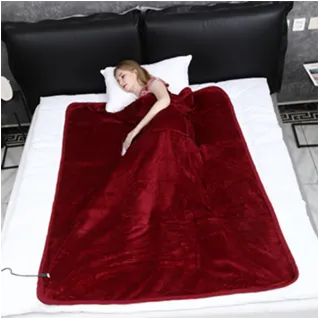
10 сар . 05, 2024 23:18 Back to list
Understanding the Hourly Cost of Using an Electric Blanket
The Cost of Electric Blanket Per Hour An In-Depth Analysis
Electric blankets have gained tremendous popularity due to their ability to provide warmth and comfort, especially during the cold winter months. However, many consumers often overlook one important factor the cost of operating these blankets per hour. Understanding this cost can help users make informed decisions about their heating choices and manage their electricity bills effectively.
To determine the cost of running an electric blanket, it is essential to consider several factors, including the wattage of the blanket, the electricity rates in your area, and the duration of usage. Most electric blankets typically range from 60 to 100 watts. For calculations, let’s use an average wattage of 80 watts, which is common for many models.
Electricity rates vary by location, but the average cost in the United States hovers around $0.13 per kilowatt-hour (kWh). Since most electric blankets consume less than 1 kW, converting wattage to kilowatts is necessary to calculate the hourly cost. To convert watts to kilowatts, divide the wattage by 1,000. Thus, for an 80-watt blanket
\[ \text{Kilowatts} = \frac{80 \text{ watts}}{1000} = 0.08 \text{ kW} \]
Next, we can find the cost of running the blanket for one hour
\[ \text{Cost per hour} = \text{Kilowatts} \times \text{Electricity Rate} = 0.08 \text{ kW} \times 0.13 \text{ USD/kWh} = 0.0104 \text{ USD} \]
cost of electric blanket per hour

This implies that operating an electric blanket for one hour will cost approximately $0.01. If you were to use the blanket for 8 hours overnight, the cost would increase to around $0.0832, or roughly 8.3 cents.
While this may seem insignificant on a per-hour basis, it can add up over time. For example, if you use your blanket every night for a month, the total cost would be
\[ 0.0104 \text{ USD/hour} \times 8 \text{ hours/night} \times 30 \text{ nights} = 2.496 \text{ USD} \]
Therefore, understanding the cumulative cost is crucial. It’s important also to consider that many electric blankets come with programmable timers. These features allow users to set the blanket to turn off after a specified time, preventing unnecessary energy consumption and saving on costs.
Furthermore, the financial benefits of electric blankets extend beyond mere electricity savings. They can reduce reliance on central heating systems, which consume more power. By heating your bed instead of the entire house, you can achieve greater warmth at a lower cost.
In conclusion, the cost of running an electric blanket is relatively low and can be a cost-effective solution for staying warm during the colder months. With a clear understanding of the hourly costs involved, users can enjoy the comfort of electric blankets without the worry of skyrocketing electricity bills. Investing in a quality electric blanket with energy-saving features can enhance both comfort and efficiency, making it a wise choice for winter warmth.
-
The Rise of Heated Blankets for Dogs Outdoor
Jun.09,2025
-
Revolutionize Your Sleep with a Heated Mattress Blanket
Jun.09,2025
-
Revolutionize Your Comfort: Discover the Cordless Heated Blanket Advantage
Jun.09,2025
-
Keep Your Pets Warm and Comfortable
Jun.09,2025
-
Experience Warmth Reimagined: Discover the Power of an Electric Blanket
Jun.09,2025
-
Choosing the Best Cat Heating Pad Indoor and Out
Jun.09,2025
Realted Products



